To Cappadocia with the Locals
It wasn’t until I boarded the bus that would take me all the way from Bodrum on the Aegean Sea to Aksaray in the heart of Cappadocia, that I learned of the extraordinary company I would enjoy on the journey.
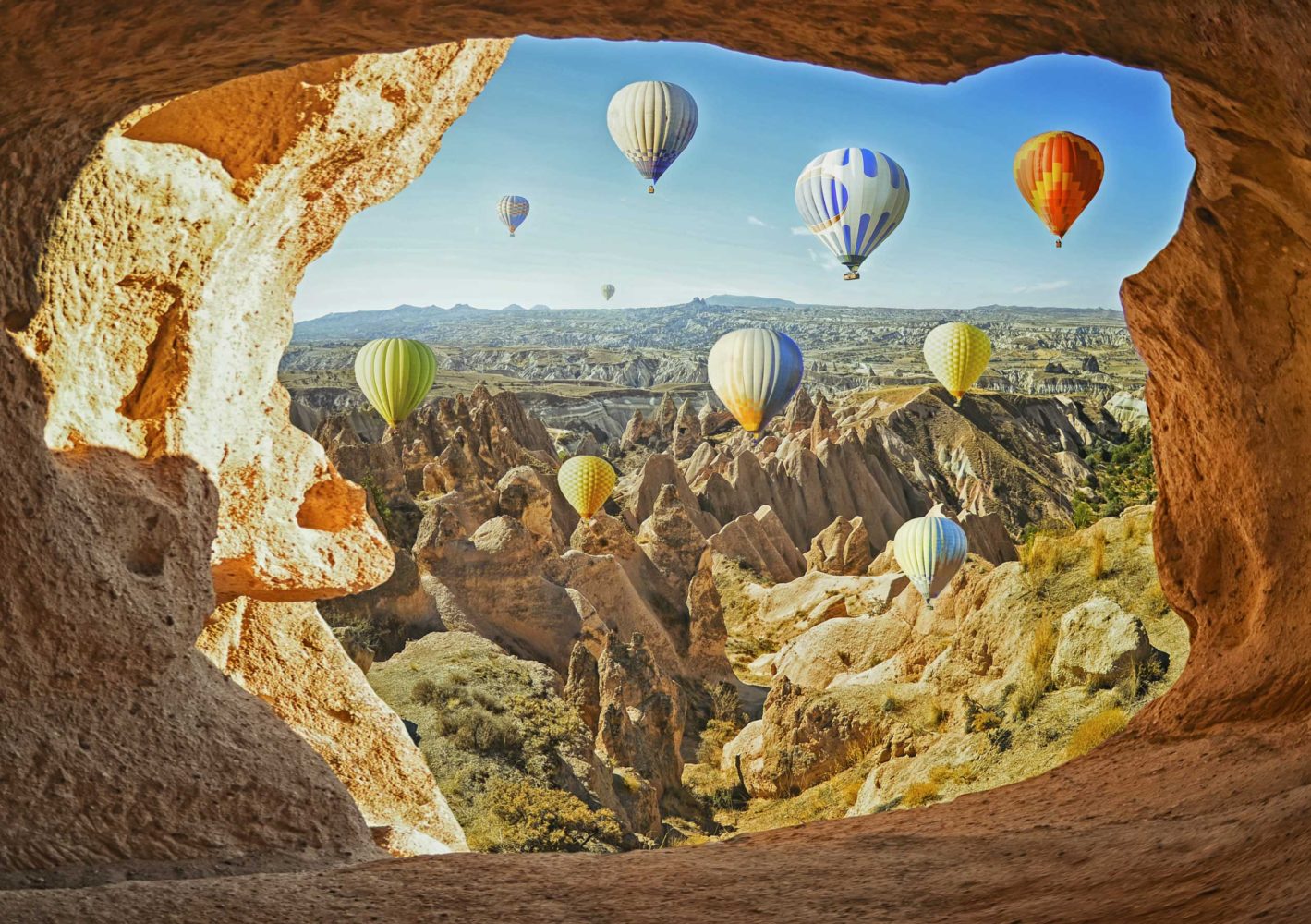
I had seen the tour advertised in the window of a travel agency in Didim, a village near Bodrum. With my rudimentary Turkish I deciphered the destinations, the duration and the excellent price, and booked it. However, I failed to notice the trip had been specially designed for Turkish old-age pensioners.
Fashionably late, my fellow travellers arrived, one by one, loaded down with food baskets and luggage. Full of energy, and happily chatting away in anticipation of the journey — not one of the passengers came close to resembling an old-age pensioner. That impression strengthened as soon as the bus trip got underway. Music filtered through the bus, and the pensioners started dancing and clapping enthusiastically in the aisle — to such an extent, the bus began to rock from side to side, and the driver was forced to tell them to sit down.
Being the only foreigner, I was treated like a favourite pet by my travelling companions who tried their best to communicate in a comical mixture of Turkish and English, and fed me treats from their food baskets — so many I could hardly move.
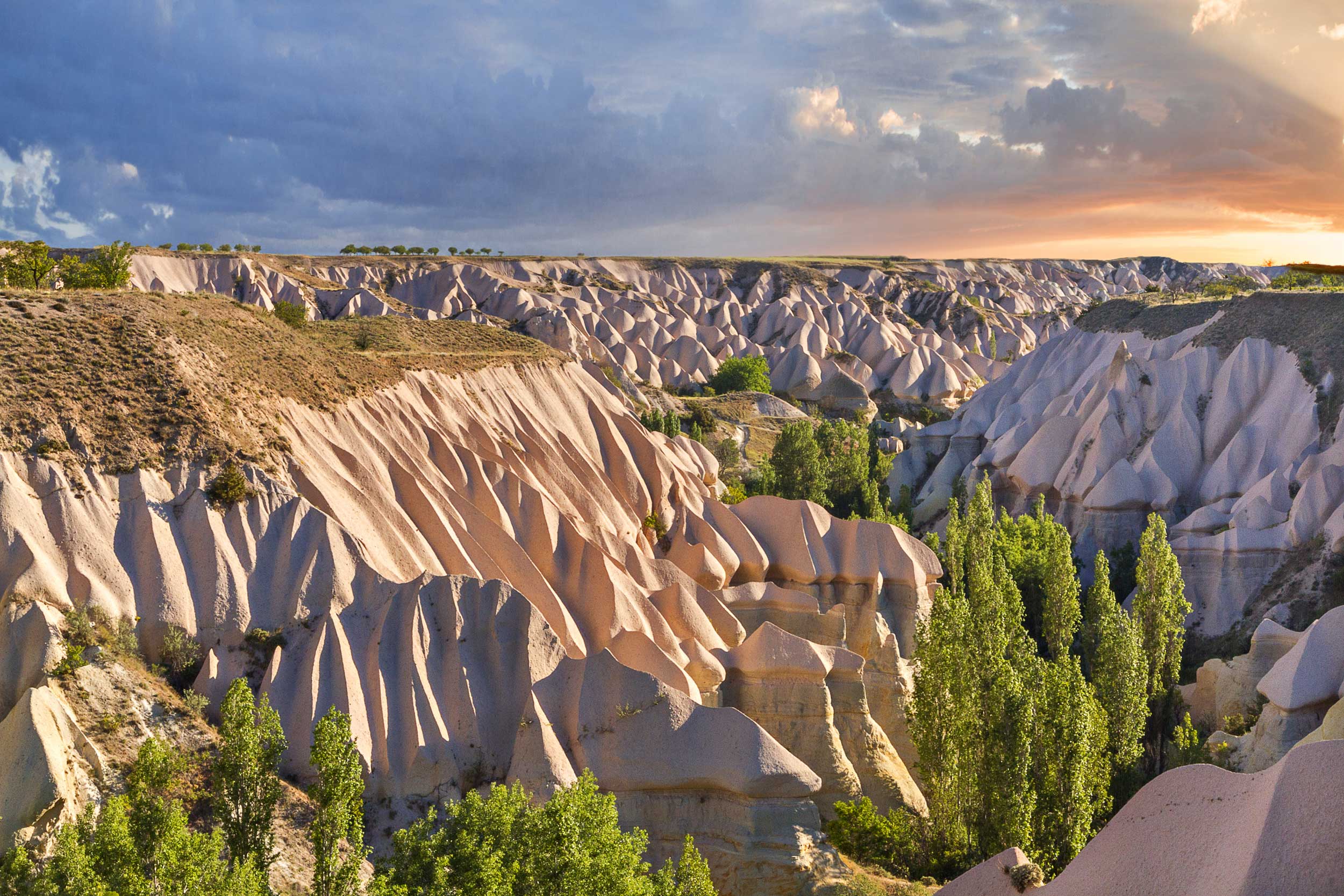
For 12 hours, the bus carved its way through the ever-changing Turkish landscape before arriving in Aksaray, in the heart of Anatolia. An important stop along the ancient Silk Road, Aksaray provided an amazing first view of the many cave dwellings, which, along with the famous fairy chimney rock formations, form Cappadocia’s unique, moon-like landscape.
After a well-deserved breakfast break, a local tour guide took over to lead us along the first excursion of the trip: a five-kilometre hike along the Ihlara Valley. The valley lies at the bottom of a deep canyon, carved out by the narrow, but very fast Melendiz River. I carefully inched my way down 360 steps of volcanic rock to reach the valley floor and started hiking along to Belisirma, the village where the bus collected us.
Walking the Ihlara Valley is a unique experience because along with serene, bucolic scenery of water, trees and birds, carved into the rock faces are more than 60 Byzantine churches dating from the 11th to the 13th century. Negotiating the slippery ground, and sometimes clinging to branches so as not to fall into the water, I stooped to enter the tiny churches to be rewarded by the sight of magnificent ancient wall paintings and colourful frescoes, so well-preserved they appeared as though they were painted yesterday.
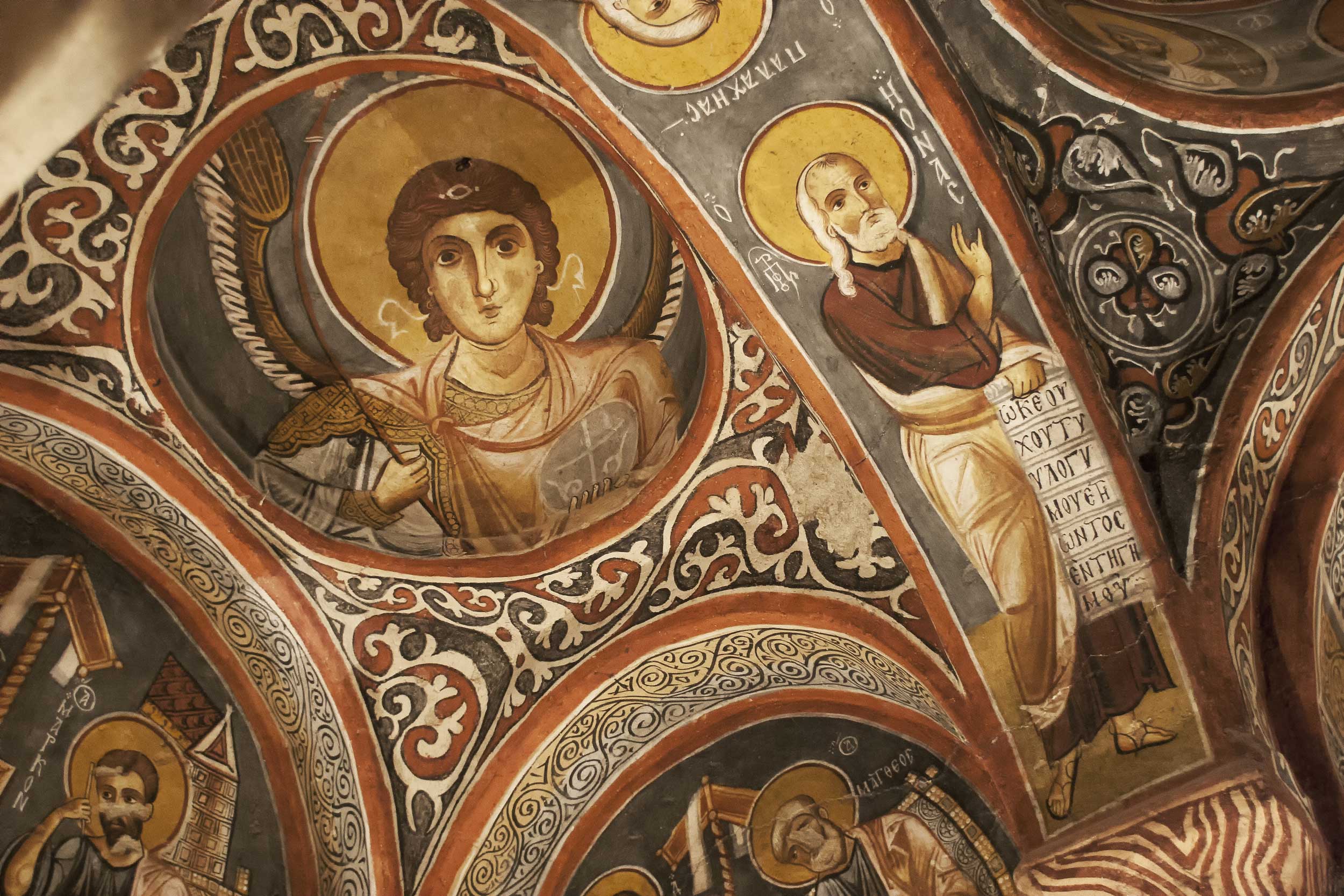
The beauty of Cappadocia is that architectural treasures can be found below ground and above, as we discovered at our next stop. Derinkuyu Yeralti Sehri is the largest of several subterranean cities in Cappadocia and is almost ten levels deep. Dating back to Persian and Byzantine times the large city provided shelter and refuge from invading Romans and Muslims for more than 35,000 people. Gigantic round stone doors closed off each floor to prevent enemies from entering.
Everything from airshafts to wine presses and bakeries were carved into the soft volcanic rock to enable people to survive underground for a long time. Be warned: it is a somewhat claustrophobic experience and not for the faint-hearted.
Back above ground and breathing fresh air, we found ourselves at the foot of a cityscape of rock formations — Cappadocia’s famous fairy chimneys. They are equally as impressive at ground level as they are when viewed from the basket of one of the hundreds of hot air balloons floating in the skies above Cappadocia
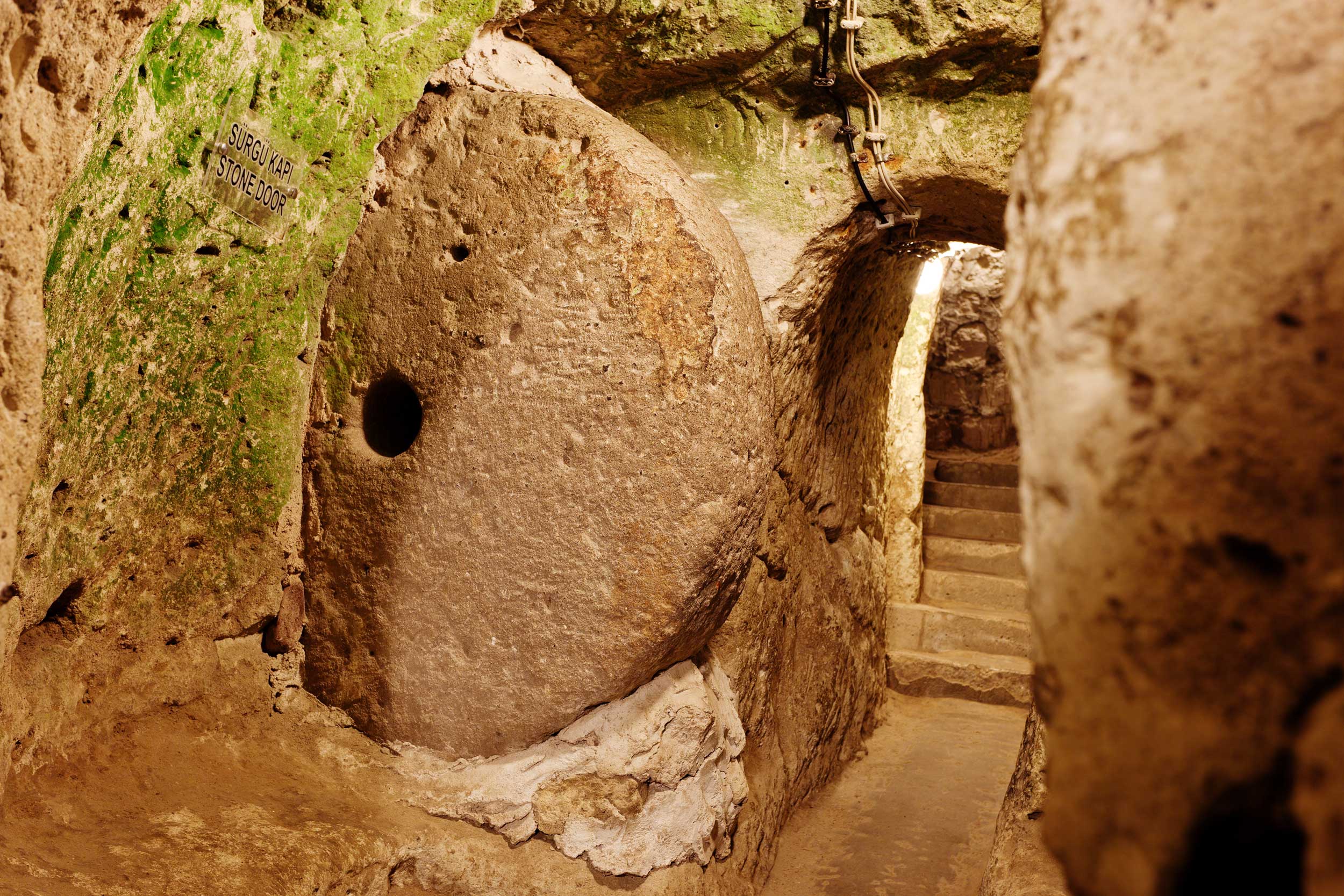
Not a fan of ascending into the air in anything that doesn’t have at least one engine, I sat resting my feet, enjoying a glass of traditional Turkish tea, while some thrill-seeking pensioners took to the skies
That night we stayed in Nevsehir, a charming town with surprisingly few tourists. The following morning we visited an artisan pottery studio where reproductions of historical designs are crafted — the originals are displayed in museums. Located underground in a cave, we would have missed the entrance to the studio had it not been for a clay figurine of a potter acting as a sentinel outside, signalling visitors to enter.
My fellow travellers bought so many souvenirs; again, the bus driver was forced to intervene, pointing out the limited storage space on the bus.
No trip to Cappadocia is complete without a visit to Pigeon Valley, our next stop. Located between Göreme and Uchisar, Pigeon Valley is named so, because of the thousands of pigeon houses carved into the rock faces. Traditionally, the pigeon houses were used to collect the birds’ droppings later used for fertiliser.
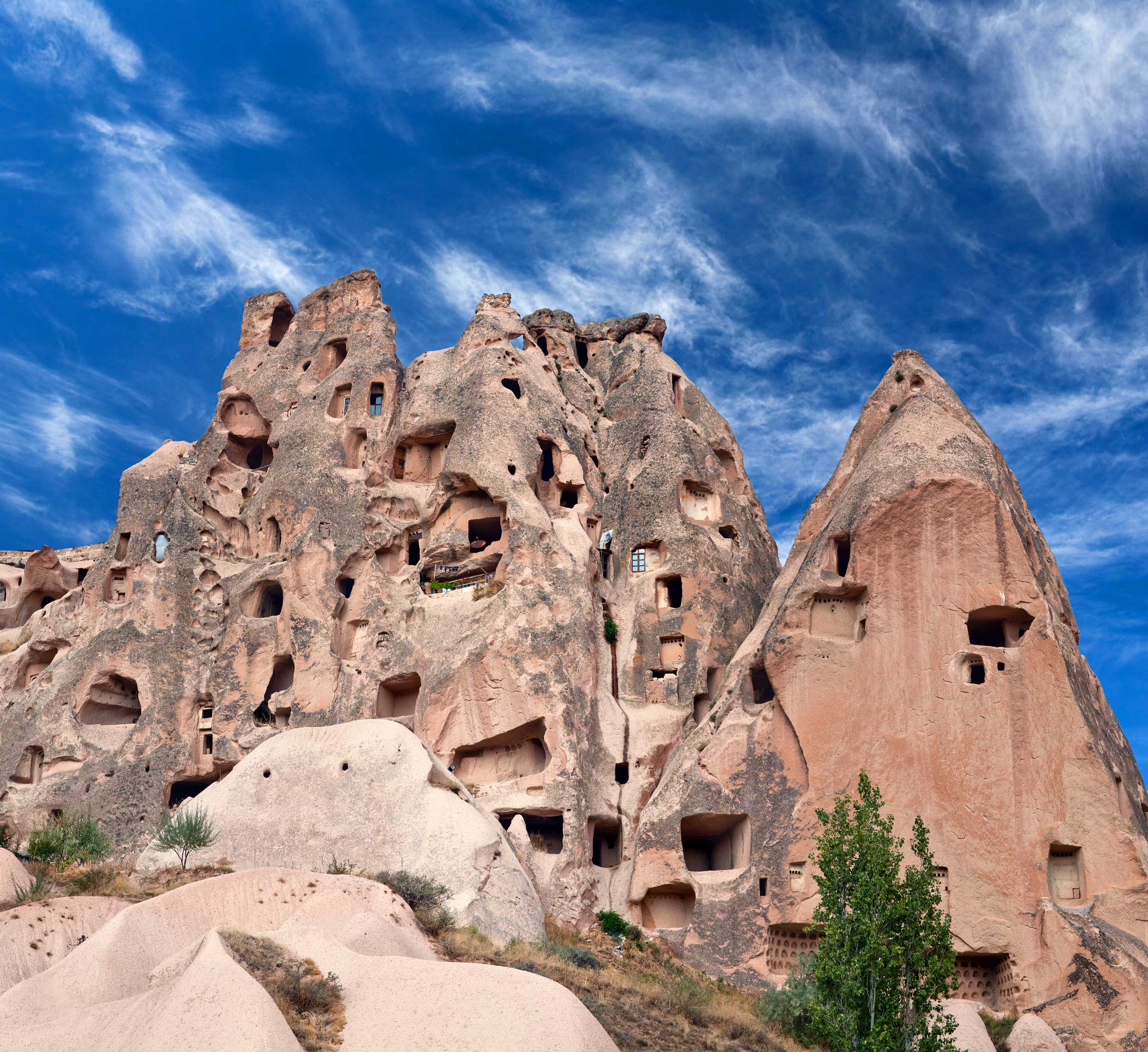
Countless cave homes sit on top of the four-kilometre-long valley, and the exposed rocks are reminiscent of snowcaps — even in summer. Turkey’s famous wish trees dot the lip of the canyon; each tree covered with tiny scraps of paper and fabric, fluttering in the breeze like eyes — offerings for the visitor’s wishes to come true.
What surprised me most about Cappadocia is its strong spiritual history. Along with cave homes and fairy chimneys, Cappadocia is also the root of the mysticism of the Alevite and the Sufi sects. Both are part of Islam, but each has its own philosophy and traditions.
We visited Hacibektas, a city not far from Nevsehir, where the mystic Haji Bektash Veli found refuge from the Mogul invasion in the 13th century, and founded the Alevite order. A mausoleum and many statues commemorate the mystic, and each year on August 16, Alevites from all over Turkey make a pilgrimage to Hacibektas.

Probably more widely known than the Alevites are the Sufis. Mevlana Rumi founded the Sufi order in the city of Konya in the 13th century. Mevlana’s disciples still adhere to the rules of his teachings and perform the traditional dance of the whirling dervishes, called Sema. Sema represents a spiritual journey achieving truth and reunion with God, leaving the dancer a better person. A Sema performance is a not-to-be-missed experience when visiting Turkey.
With a skyline of minarets and mosque domes, plentiful parks and green spaces, Konya feels serene. My first glimpse of the city was the green and gold of the vast mausoleum to Mevlana erected over his remains.

Inside the mausoleum, whirling dervishes treated us to a performance. As we sat in a semi-circle in one of the teaching rooms, the lights dimmed and three black-clad musicians walked in, playing traditional instruments. The dervishes soon joined the musicians, each wearing a traditional long white cloak and a conical hat, which represents a tombstone. First slowly, then with increasing speed, the dancers start to whirl, with one arm pointing heavenwards, the other to the earth, their cloaks flying.
No one can remain untouched by the spectacle performed by the dedicated men (and of late, also women) who train for years to learn the Sema.
The landscape, the spiritual history of Cappadocia and the splendid company of my fellow travellers, left me with a greater understanding of the fascination Turkey holds for all who are lucky enough to visit.
